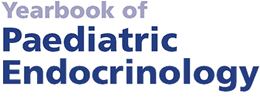ESPEYB15 4 Growth and Growth Factors Important for clinical practice (5 abstracts)
4.2 Efficacy of growth hormone treatment in children with type 1 diabetes mellitus and growth hormone deficiency-an analysis of KIGS data
Bonfig W , Lindberg A , Carlsson M , Cutfield W , Dunger D , Camacho-Hübner C & Holl RW
Department of Pediatrics, Klinikum Wels-Grieskirchen, Wels, Austria
To read the full abstract: J Pediatr 2018; 198: 260-264
The incidence of T1DM in children <15 years is increasing at an overall annual relative rate of 3.9% (95% CI 3.6-4.2) [11]. The prevalence of GHD is estimated at approximately 1:4000 to 1:10000 [12-14]. Management of the very rare patients who have both T1DM and GHD raises questions of efficacy and safety of GH therapy. Treatment adds to their multiple daily injections and, while insulin is a life-saving therapy, GH is not, leading to consider short stature a less relevant problem and consequently reducing the adherence to GH therapy in the long run. Moreover, GH and insulin exert opposite effects on glucose metabolism, GH antagonizing insulin action, so discouraging its use in T1DM.
To date, only sporadic case reports and very few studies have assessed the results of GH therapy in children with GHD and T1DM. A recent study in a small cohort of Italian children showed that GH treatment in T1DM children is effective and safe [15]. Consistently, Bonfig et al. here describe a larger retrospective study, reporting that GH treatment induces similar growth responses in GHD children, with or without T1DM, and raising no safety issues. These findings are in contrast with previous results showing that GH treatment is less effective in promoting growth when both diseases coexist, showing a median height gain of only 0.3 SDS over a 2-year course of treatment [16]. This discrepancy may depend on the late diagnosis and start of GH treatment and/or inadequate GH dosage out of concern for metabolic side effects in that older study. Unfortunately, in the current study no information regarding metabolic profile and insulin demands during GH treatment was provided. Another major weakness is the short-term analysis, which focused only on the first year growth response.
Overall, these recent findings suggest that the diagnosis of T1DM should not discourage GH replacement therapy in truly GH deficient patients, although the decision to start this kind of multi-injection therapy should be limited to “classical” GHD and should be carefully weighed taking into account the burden for the patients and their families. Further studies are needed to evaluate the efficacy and safety of long-term GH therapy and its impact on metabolic profile and insulin requirement in children with T1DM.
11. Patterson CC, Dahlquist GG, Gyürüs E, Green A, Soltész G, Group ES. Incidence trends for childhood type 1 diabetes in Europe during 1989-2003 and predicted new cases 2005-20: a multicentre prospective registration study. Lancet. 2009;373:2027-33.
12. Lindsay R, Feldkamp M, Harris D, Robertson J, Rallison M. Utah Growth Study: growth standards and the prevalence of growth hormone deficiency. J Pediatr. 1994;125:29-35.
13. Vimpani GV, Vimpani AF, Lidgard GP, Cameron EH, Farquhar JW. Prevalence of severe growth hormone deficiency. Br Med J. 1977;2:427-30.
14. Bao XL, Shi YF, Du YC, Liu R, Deng JY, Gao SM. Prevalence of growth hormone deficiency of children in Beijing. Chin Med J (Engl). 1992;105:401-5.
15. Zucchini S, Iafusco D, Vannelli S, Rabbone I, Salzano G, Pozzobon G, et al. Combined therapy with insulin and growth hormone in 17 patients with type-1 diabetes and growth disorders. Horm Res Paediatr. 2014;82:53-8.
16. Bonfig W, Molz K, Woelfle J, Hofer SE, Hauffa BP, Schoenau E, et al. Metabolic safety of growth hormone in type 1 diabetes and idiopathic growth hormone deficiency. J Pediatr. 2013;163:1095-8.e4.



